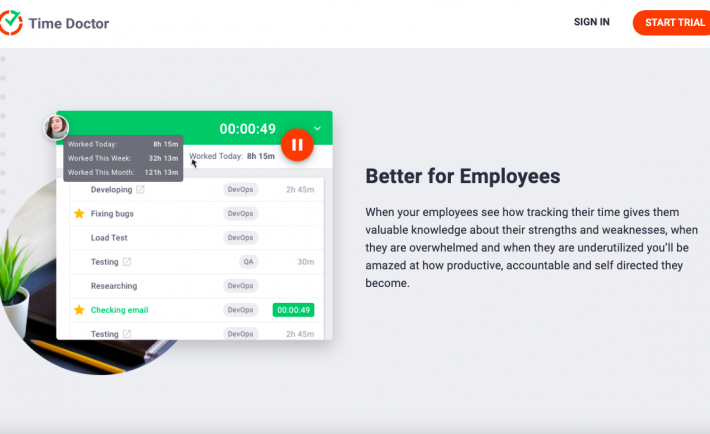You’re looking for a way to keep an eye on employee productivity without making your employees feel like you don’t trust them.
You’ve heard of a few options, but you’re not sure which one will work best for your team. Allow us to delve deeper, so you can decide what’s best for your business.
Why tracking productivity is important
Productivity is a key factor in the success of any business.
When employees are productive, it means that tasks are getting completed efficiently and on time. This increases the chances of meeting deadlines and achieving goals.
But as a boss, you can’t just assume that your employees are being productive without some form of tracking. It’s important to monitor productivity so that you can identify any areas where improvement is needed. You also need to be aware of any potential problems that could occur if work productivity levels drop.
It’s also crucial to track employee productivity so that you can give them the appropriate amount of work. If employees have extensive periods of downtime, it can lead to them becoming bored or distracted. On the other hand, if they’re overworked, it can lead to fatigue and decreased motivation.
Establishing clear expectations and communication
From the very beginning, establish clear expectations with your employees. Let them know what you’re looking for, and be transparent about it.
That way, they won’t feel like you’re watching their every move—or worse, that you don’t trust them. And make sure that you communicate those expectations effectively. Get everyone on the same page, so there are no misunderstandings.
Identifying effective ways to monitor productivity

Image Credits: asana.com
There are a few effective ways to monitor productivity that won’t erode employee trust.
The first is task or project management software. This type of software, like Asana, allows you to see what tasks or projects are being worked on and how much progress has been made.
Another way to monitor productivity is with time-tracking, such as Time Doctor, or file-tracking software. They allow you to see how much time is being spent on each task or project and what files are being accessed.
Recognizing when to take a step back
You might be thinking to yourself, “If I’m not monitoring my employee’s every move, how will I know if they’re being productive?” And that’s a valid concern.
But there are ways to track productivity that don’t involve being overly intrusive. If you do need to check in on them from time to time, try to do it in a way that doesn’t make them feel like you don’t trust them.
Or to calm the micromanager traits in you, you could ask them to keep a log of their daily tasks and send you a brief rundown in bullet points of what they have accomplished each day before knocking off.
Trust is vital in any relationship, and that includes the relationship between boss and employee. By taking these steps, you can keep track of productivity without eroding employee trust. We know it’s a tricky balance, but bosses can keep an eye on their employees’ productivity without making them feel like they’re being constantly monitored. By taking a more subtle approach, bosses can foster a sense of trust and collaboration, while still being able to keep track of what’s going on.


